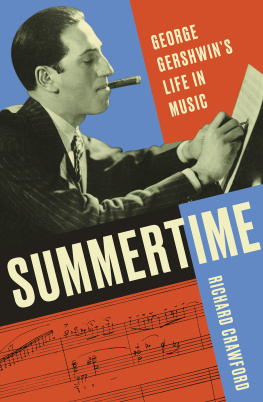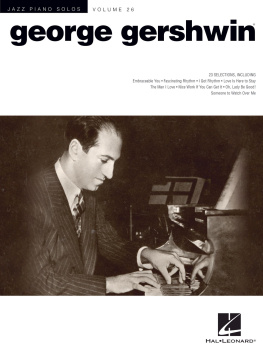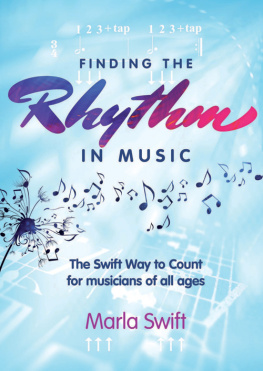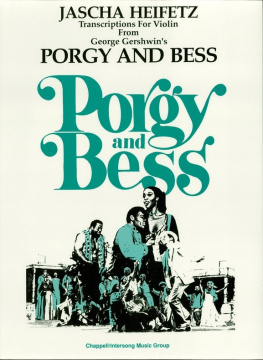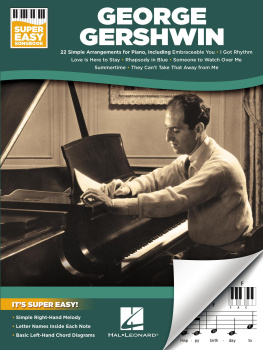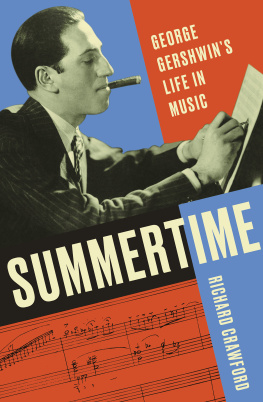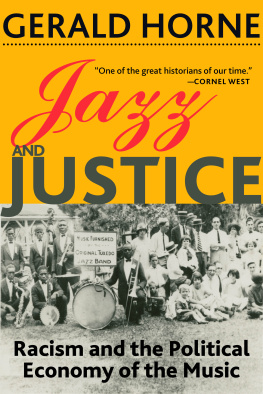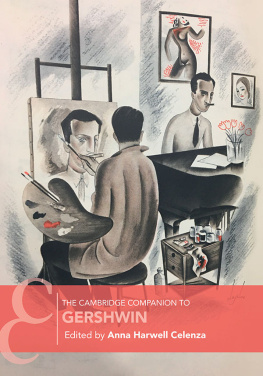Contents
Guide

ALSO BY
RICHARD CRAWFORD
Americas Musical Life: A History
An Introduction to Americas Music
The American Musical Landscape:
The Business of Musicianship from Billings to Gershwin
American Sacred Music Imprints, 1698 1810
with Allen P. Britton and Irving Lowens
William Billings of Boston: Eighteenth - Century Composer
with David P. McKay
Andrew Law: American Psalmodist
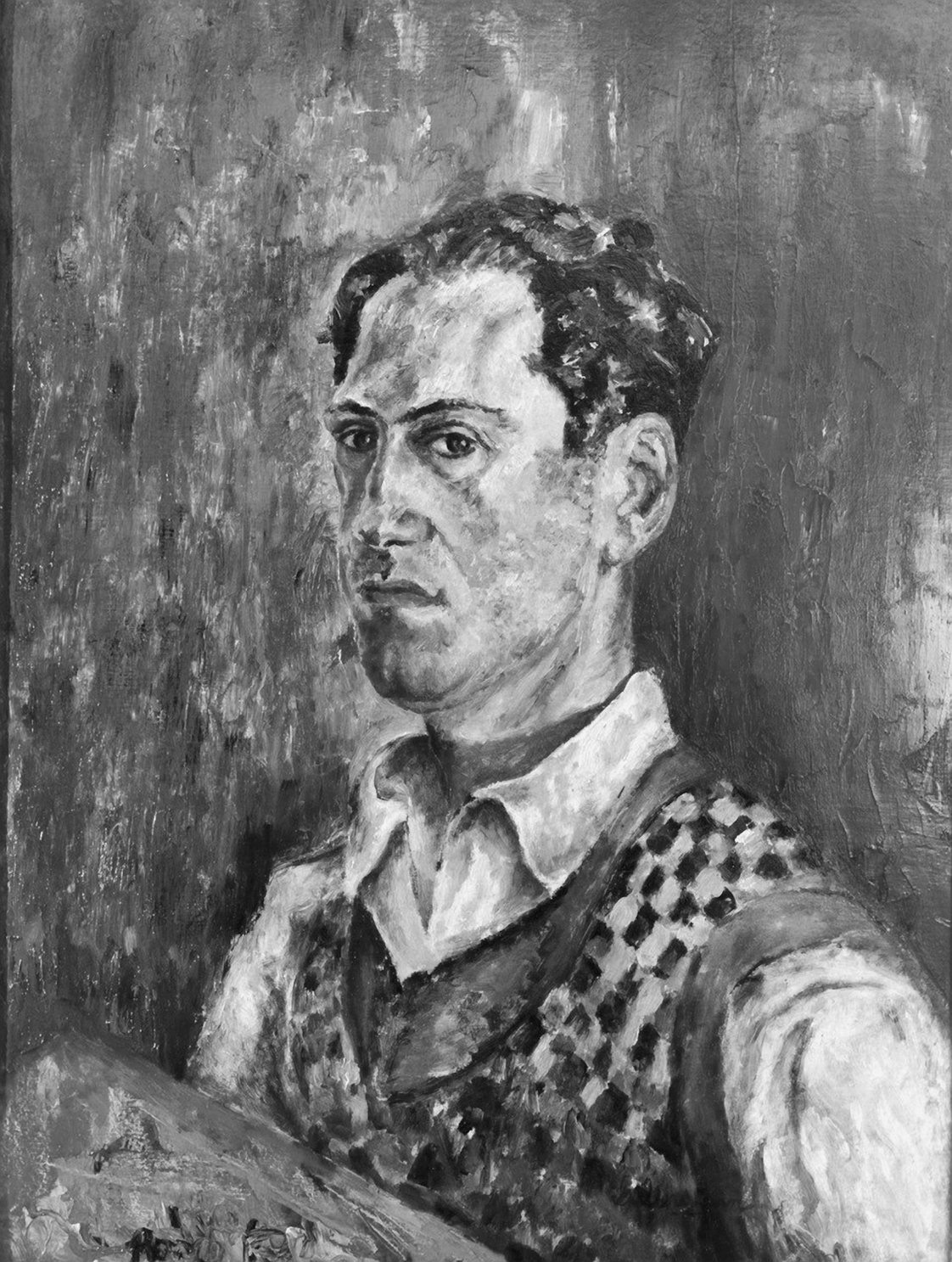
SUMMERTIME
GEORGE GERSHWINS LIFE IN MUSIC
RICHARD CRAWFORD

Frontispiece: George Gershwins self-portrait in checkered sweater, 1936.
Copyright 2019 by Richard Crawford
All rights reserved
First Edition
Photographs from the Ira and Lenore Gershwin Trusts.
Jack photographs: (Gershwin) Edward Steiche / Conde Nast Collection / Getty Images: (sheet music) Gabriel Hackett / Archive Photos / Getty Images
For information about permission to reproduce selections from this book, write to
Permissions, W. W. Norton & Company, Inc., 500 Fifth Avenue, New York, NY 10110
For information about special discounts for bulk purchases, please contact
W. W. Norton Special Sales at specialsales@wwnorton.com or 800-233-4830
Book design by Marysarah Quinn
Production manager: Julia Druskin
The Library of Congress has cataloged the printed edition as follows:
Names: Crawford, Richard, 1935 author.
Title: Summertime : George Gershwins life in music / Richard Crawford.
Description: First edition. | New York : W. W. Norton & Company, [2019] |
Includes bibliographical references and index.
Identifiers: LCCN 2019015000 | ISBN 9780393052152 (hardcover)
Subjects: LCSH: Gershwin, George, 18981937. | ComposersUnited StatesBiography. | LCGFT: Biographies.
Classification: LCC ML410.G288 C73 2019 | DDC 780.92 [B]dc23
LC record available at https://lccn.loc.gov/2019015000
ISBN 9780393635416 (ebook)
W. W. Norton & Company, Inc., 500 Fifth Avenue, New York, N.Y. 10110
www.wwnorton.com
W. W. Norton & Company Ltd., 15 Carlisle Street, London W1D 3BS
Penelope Ball Crawford
Companion nonpareil
The fact is that in the Gershwin years there was nothing more thrilling than to hear George play the piano. It heightened the sense of being alive.
S. N. BEHRMAN
CONTENTS
A SONGWRITER AND PIANIST who became an honored composer, George Gershwin (18981937) brought a blend of originality and musicianship unique to Americas musical landscape. His success, embracing both popular and classical spheres, has made him a figure well known to posterity. Over the years his biographers, some two dozen strong, have served him well.
Their effort began with scholar Isaac Goldbergs study of Gershwins life and music, published in 1931 on the composers thirty-third birthday. Goldberg wrote knowledgeably about a matchlessly talented young pianist and composer whose parents and siblingsespecially Ira Gershwin, elder brother and collaboratorplayed key roles in the authors portrait of George. In 1973, marking the seventy-fifth anniversary of Georges birth, two consequential biographies appeared. The Gershwins by Robert Kimball and Alfred Simona scholar and a pianist, respectivelyappeared in a coffee-table-book format, mixing historical narrative, personal comments and recollections, and photographs plus lists of data relevant to the authors research. Both men knew Ira Gershwin first-hand, and their story was grounded in what he could reveal to them. George, who had died in 1937, is portrayed here within Americas culture of artistry and entertainment, and a number of the Gershwins friends and contemporaries are quoted generously. Another book from that anniversary, The Gershwin Years, by Edward Jablonski and Lawrence Stewart, a biographer and an academic collaborator, also relied heavily on the accumulation of material in Ira Gershwins Beverly Hills abode. Their book, too, was filled generously with pictures and facsimiles of documents. More recently, by 2005 musicologist Howard Pollack had researched George Gershwin: His Life and Work rigorously, producing a singular account of a prominent American composers music and its history, and of his artistic accomplishments . Pollacks impressive tome covers its subjects work in detail, while mostly steering clear of the life Gershwin led as a force in Americas cultural landscape.
These books stand as a substantial core in a roster of biographies with varied qualities. Thanks in part to them, and to the efforts of other writers, Gershwins achievements are well known today. Most of all, the verve and panache of his music has won a place for it in the worlds soundscape. But what justifies the appearance of a new Gershwin biography now, eighty-two years after his death? The answer lies in the perspective of the story told here: an academic scholars account of Gershwins life in music during the composers own time.
Who is that author, and how did this book come to be written?
T HE AUTHOR of Summertime: George Gershwins Life in Music has specialized in the study of Americas music. Growing up in Detroit in a family that encouraged piano lessons, and where public schools offered instrumental instruction and organized ensembles, I spent much of my youth making music. Though awkward at the keyboard, I took lessons for several years from a piano teacher whose tutelege, grounded in European masters from Bach to Schumann, guided me through the variety and challenge of a pianistic zone that my technique could negotiate, more or less. As a saxophonist in bands and orchestras, too, I played pieces ranging from marches and dance music to classical overtures and tone poems. During those years, I also sang in school choruses and a church choir: groups where singerssopranos asidelearn the satisfactions of making harmony. At the same time, thanks to the phonograph, I learned that jazz was the music I was most drawn to hear and to perform. Playing sax for several years with friends in a jazz-based quintet opened the door for me to the art of improvising. And thanks to a diligent leader who fashioned an infrastructure for us, we played for dances and other functions for pay. In retrospect, it could be said that my youthful years were lived to a soundtrack of music from Bach to Brubeck: an aural spectrum rich in moments that could bring a tickle to the spine and a lump to the throat.
I began college in 1953 with engineering in my sights to prepare for a life in the familys foundry business. But by the second year, stepping up my listening, and finding plenty of music-making on the University of Michigan campus, I discovered plenty to engage with, especially classical concert-going. Soon my saxesalto and tenorwere consigned to the closet, for Ann Arbor already had enough decent sax players to handle the work available. (In those days jazz music was verboten in the halls of the universitys School of Music.)
By my third year in college I knew I was a musician at heart, if far from a skilled maker of music. So I looked into a transfer to the School of Music. I learned that the curricula most appealing to me were for budding composers and performers, neither of whose skills fit my capacities. That year found me accepting an invitation to conduct a group of friends in a choral competition, but the university offered no program in conducting. A course of study in music literature, history, and criticism was also described in the catalogue. That approach struck a note appealing to a reader of books about the composers and the music that I was learning to love. But the program gave no hint of a postgraduate future. And with three siblings in the Crawford family to be schooled after me, that option wouldnt fly. Thus the field of music education, training music teachers for elementary and high schools, proved to be my sole sensible option. That curriculum included two years of courses in both music history and music theory, plus participation in an ensemble, but little else that intrigued me. Nevertheless, Id never been schooled in either of the core subjects required, and the music education program would lead to a job. So I applied to transfer from Engineering to the School of Music and was accepted as a music education major.

